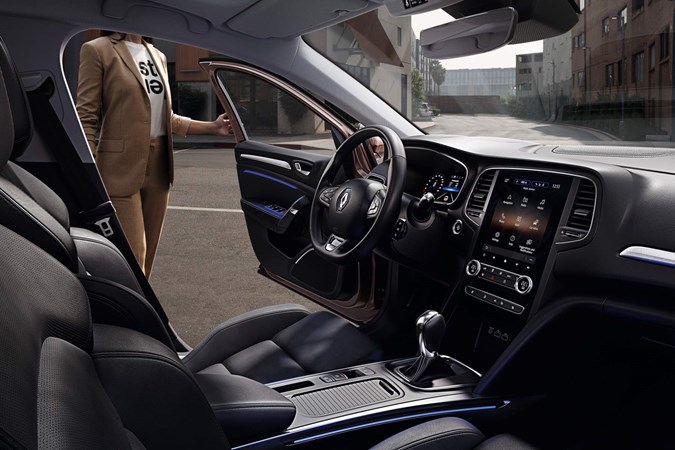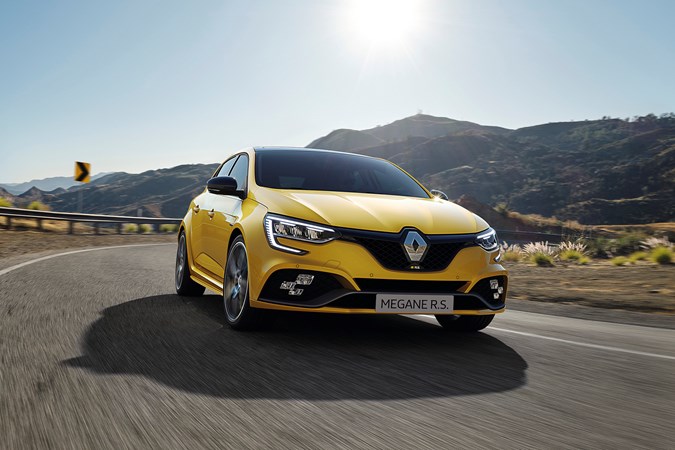Renault has treated its Volkswagen Golf-rivalling hatchback, the Megane, to a mid-life facelift. The update, though cosmetically minor, does usher in a wealth of new technology, including upgraded dashboard screens and a plug-in hybrid engine option, called E-Tech.
Styling changes are typically minor for this sort of mid-cycle facelift, and visually little has changed from this generation Megane’s launch in 2016. The lower portion of the front bumper sees slightly altered housings for the foglights, there’s a new pinstriped effect to the chrome on the front grille, and the LED headlights have been restyled.
Greater changes are afoot inside, where the Megane can now be specified with the larger, 9.3-inch infotainment touchscreen first seen on the Clio. That car’s 10.2-inch digital dashboard also makes an appearance.

Renault’s also replaced the previous GT Line trim with a new R.S. Line, which offers the same blend of sporty styling and standard powertrains as before, but with greater differentiation from the standard models.
Plug-in hybrid powertrain for all-electric running in town
Renault’s also bringing the Megane in line with rivals such as the Volkswagen Golf and Kia Ceed by offering a plug-in hybrid powertrain. Named E-Tech, it’s the same set-up as found in the latest Renault Captur, and pairs a 1.6-litre petrol engine with two electric motors and a sophisticated gearbox to allow it to run in a variety of driving modes.
When the 9.8kWh battery pack is charged to full capacity, Renault claims it can run for up to 65km – just over 40 miles – without troubling the petrol engine at all. That’s more than enough for most daily commutes and urban trips.
With both petrol and electric power combined, the Megane plug-in has 160hp, which should provide ample performance for most drivers – along with the added benefits of instant electric torque at low speeds.
The E-Tech powertrain will initially be available only on the estate models, but it’s coming to the hatchback soon after launch. No word yet on whether it impacts boot space or passenger room.
R.S. is now more powerful
The other news on the engine front is that the basic Megane R.S. now offers an impressive 300hp, up from 280hp in the pre-facelift car. The 300hp figure, once the reserve of R.S. Trophy and R.S. Trophy-R models, brings the base R.S. in line with the BMW M135i and Audi S3 for power.

Trophy and Trophy-R cars are still available, with bespoke chassis tuning and upgraded suspension.
What this means for you
The current-generation Renault Megane is a good car, but it’s never been one of the greats – relegated to the status of ‘also-ran’ against the might of the Volkswagen Golf and Ford Focus. Besides the bold styling, it’s always seemed to lack any particular selling points.
This facelift addresses one of the biggest issues we had with the old car, which was its poor infotainment offering, but it can’t do anything for the cramped rear or underwhelming driving dynamics on standard, non-R.S. cars.
The plug-in hybrid model should prove interesting, and we’re looking forward to seeing if it can prove a good budget offering to the likes of the excellent Volkswagen Golf GTE. Should you buy one? Too early to tell – but we’ll let you know as soon as we do.
The facelifted Renault Megane goes on sale in Summer 2020.
Further reading
> Best hybrid cars on sale now
Just so you know, we may receive a commission or other compensation from the links on this website - read why you should trust us.









